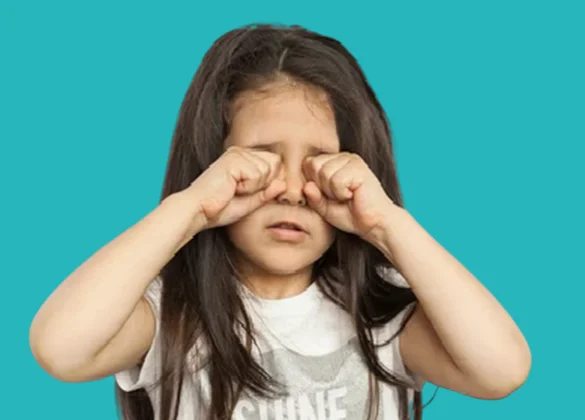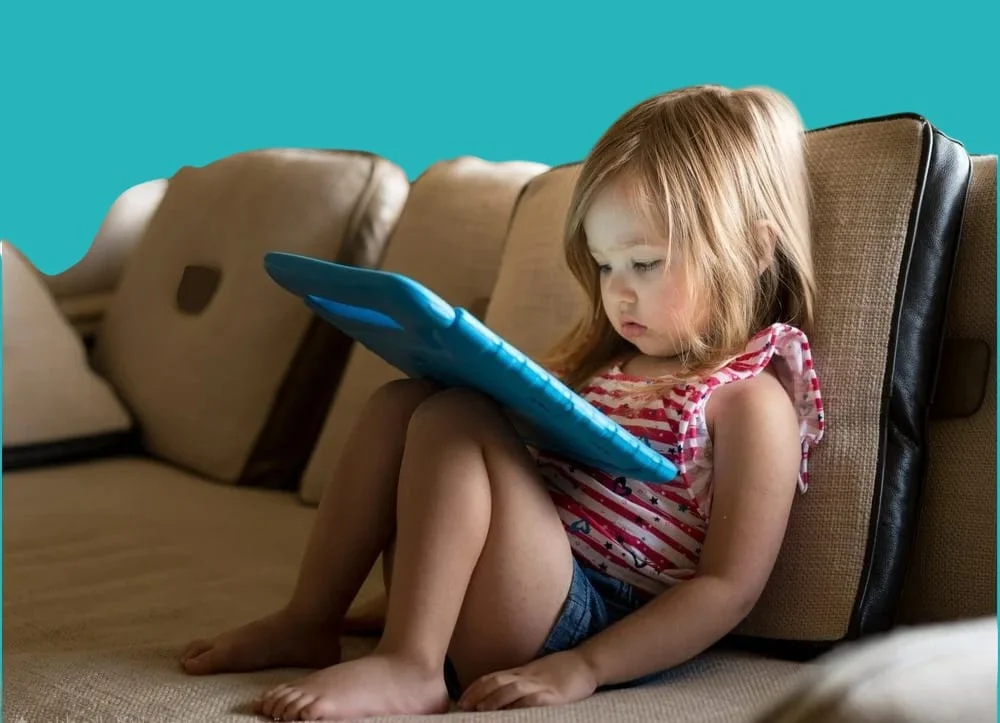Poor vision in children is a condition that affects children in their early years. They may not be able to express their lack of clear vision.
However, symptoms such as difficulty focusing their eyes and moving objects closer to see them are evident. Therefore, early detection of poor vision is an important step toward effective diagnosis and treatment.
In this article, we will learn about the causes of poor vision in children, its symptoms, and how to treat and prevent it so as not to affect the child's quality of life, whether socially or academically.
What is poor vision in children
Poor vision in children is the reduced ability of the eyes to see clearly, whether objects are far or near, compared to a normal child.
This weakness may be the result of certain problems such as nearsightedness, farsightedness, or astigmatism, or it may be due to an eye disease such as strabismus or lazy eye.
Causes of Poor Vision in Children
The causes of poor vision in children are varied and may be genetic, environmental, or behavioral, including:
- Strabismus.
- Lazy Eye.
- Vitamin A deficiency.
- Keratitis.
- Viral infection.
- Direct eye injury.
- Genetic factors from one of the parents.
- Prolonged use of electronic devices.
Symptoms of poor vision in children

Symptoms of poor vision in children vary and are often noticed by the parents before the child themselves. They include:
- Constant eye rubbing.
- Eye pain with frequent headaches.
- Redness and frequent tearing of the eyes.
- The child holds the television or book too close.
- Closing one eye to focus or look at objects.
- Difficulty seeing distant objects and distinguishing colors.
How is poor vision diagnosed in children
Poor vision in children is diagnosed through a comprehensive eye examination conducted by an ophthalmologist. The ophthalmologist begins by taking the child's medical history.
Then, the symptoms are noted, the primary complaint is heard, and a visual acuity test is performed using a vision chart, eye movement, and pupil response to light is examined.
The doctor also performs an examination of the fundus to detect any defects in the retina or optic nerve, to determine the appropriate treatment for the child's condition.
Methods for Treating Myopia in Children
The doctor determines treatment methods for myopia in children based on the underlying cause and its severity, including:
- Treatment of lazy eye.
- Using prescription glasses.
- Treatment by performing eye exercises.
- Reducing the use of electronic devices.
- Surgical treatment for cases that do not respond to conservative treatment.
How to Prevent Myopia in Children
You can prevent myopia in children by following the following habits:
- Do not rub your eyes excessively.
- Provide good lighting while studying.
- Limit the use of electronic screens.
- Monitor your child for changes in their visual behavior.
- Follow a diet containing vitamin A and omega-3.
Are there complications of myopia in children
Yes. Neglecting to treat myopia in children can lead to complications that negatively impact visual development, such as a gradual loss of clear vision.
The problem may worsen and lead to nearsightedness or farsightedness, in addition to the child experiencing difficulties with learning and concentration, making him more susceptible to permanent strabismus.
What are the habits that weaken a child's vision

There are many bad daily habits that weaken a child's vision, including:
- Lack of sleep.
- Studying in poor lighting.
- Sitting for long periods in front of screens.
- Neglecting to eat meals rich in vitamin A.
- Getting too close to books and screens.
- Touching the eyes with dirty hands and rubbing them frequently.
Frequently Asked Questions About Myopia in Children
Can myopia in children improve over time
Myopia in children may improve over time if it is detected and treated early and the doctor's instructions are followed.
What is the normal vision percentage in children
The normal vision percentage in children is 6/6, and this percentage may vary slightly depending on the child's age and developmental progress.
What are the types of myopia in children
There are several types of poor vision in children, including myopia, hyperopia, astigmatism, ptosis, and strabismus.
Article Summary
Poor vision in children is an eye disorder that causes difficulty seeing clearly for the affected child. It results from several causes, including genetic, behavioral, or environmental factors.
While it may be a temporary condition that resolves with proper treatment, complications can arise if diagnosis and treatment are neglected.